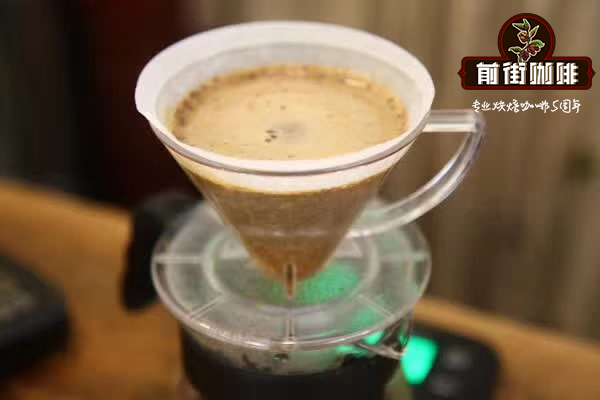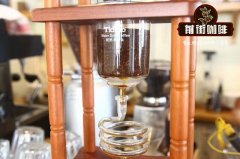Water absorption of deep-roasted coffee beans and light-roasted coffee beans

Professional coffee knowledge exchange more coffee bean information please follow the coffee workshop (Wechat official account cafe_style)
1. Shallow baking: shallow baked beans usually swell and bubble after they encounter hot water. This is not that they are not fresh, but that the texture of shallow baked beans is relatively compact. And the beans that dare to bake lightly are high-grade high-quality beans. They are beans from high-altitude producing areas, and the texture will be much harder. Shallow baked beans contain less carbon dioxide gas after grinding, which is not easy to absorb water and expand, and it is easy to sink during cooking and cause sparse surface. This situation will affect the flow rate, so it is usually recommended that the shallow baked beans should have a high temperature of more than 90 ℃ and a smaller water column, so that it is easier to flush out the flavor. Once again, expansion bubbling does not have much effect on the flavor of coffee. In fact, it has a greater impact on the extraction process than on the flavor, and there is no need to worry too much about the size of the bubbling.
two。 Deep baking: deep-baked beans are relatively loose in texture, have good water absorption, the powder layer is easy to expand and bubble by water, and coffee powder is easy to float on the surface, but the more bitter and astringent coke and other miscellaneous flavors will be relatively heavy. Most of the high-quality beans are in medium light to medium deep, and most of them are roasted moderately. It won't even appear in the middle and deep. Because the heavy baking (long baking time and high temperature), the more obvious the bitter taste, and the more obvious the bitter taste, the less the flavor (except bitter), because the bitter taste will outweigh those special flavors, that is, the flavor characteristics of fine beans. Flower aroma, fruit acid, nuts, chocolate, cream … The taste, etc., will become heavier (bitter) with the baking, but less. Only some beans of poor quality will do deep and heavy baking, using bitterness to cover up the mixed taste of poor beans.
The baking degree of brown beans is deep, the moisture content is low, and hot water will inhale more water and release gas, so the expansion rate is high. On the other hand, the expansion rate of the beans that have been kept for a long time becomes lower because of inhaling moisture in the air.
That's why there is a saying that fresh beans are pods. In fact, this way of judgment is not very correct.
The expansion of coffee powder is related to the water absorption and expansion of coffee powder, more air, small water rushing, flushing out the air is not high, less air, easy to sink the bottom, it is necessary to use a slightly larger water flow to make the coffee powder tumble, so it is not easy to block.
How much water is left for coffee powder to absorb when steaming? Sometimes the water is insufficient and sucks the air back. If the air doesn't come out, the water can't get in, and the water can't get in and smell.
If the expansion is too high, you should pay special attention to it. It doesn't make you see that it's great. The higher the expansion, the harder it is to extract.
Generally speaking, shallow baked beans have high moisture content and low expansion rate. (beans are not very good at absorbing water). What we should pay attention to is how to flush the flavor out of the beans and avoid the release of miscellaneous flavors. Raise the cooking temperature a little, control the fineness of beans, soak and cook mainly to avoid stirring. Adjust until you find the right way for the bean, and of course the deep-baked beans will have to be dealt with separately.
Important Notice :
前街咖啡 FrontStreet Coffee has moved to new addredd:
FrontStreet Coffee Address: 315,Donghua East Road,GuangZhou
Tel:020 38364473
- Prev

Hand-made coffee powder bed hand-made coffee grounds shape a pit formed by hand-made coffee
Professional coffee knowledge exchange more coffee bean information please pay attention to the coffee workshop (Wechat official account cafe_style) v60 is also a lot of ways to play a filter cup can be deep pit, but flat, round ball, can be slightly concave. Wait, wait. What they said is correct, it just represents different schools, and hand-washing the surface of the pit can actually see a lot of problems, not completely impossible to judge. And friends
- Next

Coffee roasting and Flavor Coffee Flavor and Baking relationship Coffee Baking Flavor Adjustment
Professional coffee knowledge exchange more coffee bean information Please pay attention to the coffee workshop (Wechat official account cafe_style) Coffee raw beans contain 700 or 800 aroma ingredients must be awakened by professional roasting, without this roasting process, coffee is just some uncomfortable taste of the sun or water, let alone as a drink. The raw beans are strong after five to seven minutes.
Related
- Beginners will see the "Coffee pull flower" guide!
- What is the difference between ice blog purified milk and ordinary milk coffee?
- Why is the Philippines the largest producer of crops in Liberia?
- For coffee extraction, should the fine powder be retained?
- How does extracted espresso fill pressed powder? How much strength does it take to press the powder?
- How to make jasmine cold extract coffee? Is the jasmine + latte good?
- Will this little toy really make the coffee taste better? How does Lily Drip affect coffee extraction?
- Will the action of slapping the filter cup also affect coffee extraction?
- What's the difference between powder-to-water ratio and powder-to-liquid ratio?
- What is the Ethiopian local species? What does it have to do with Heirloom native species?

